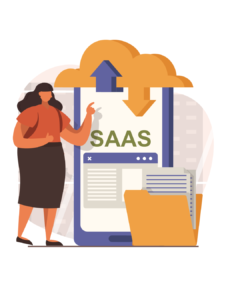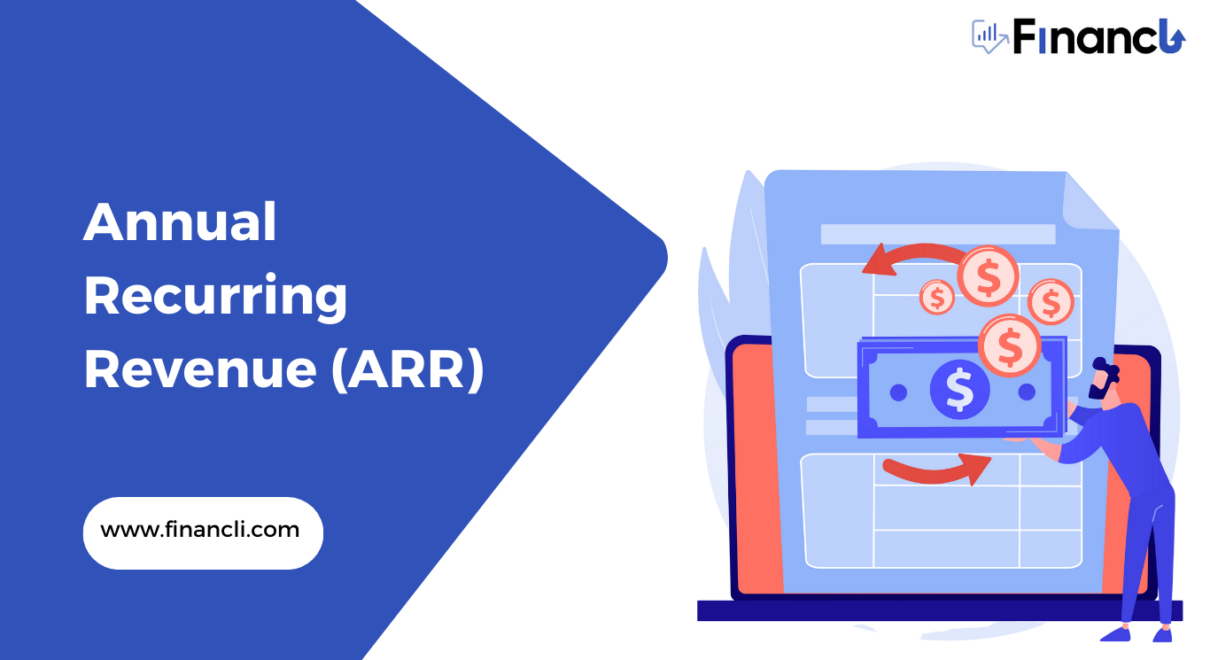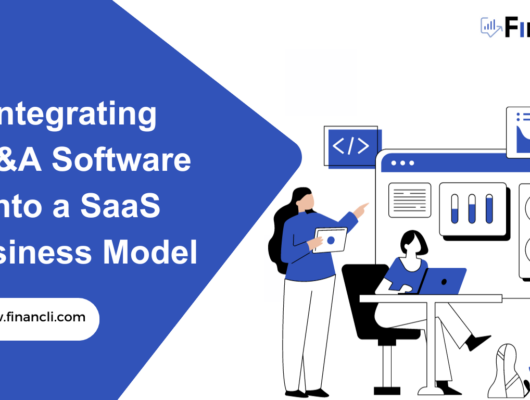Annual Recurring Revenue (ARR)
Annual Recurring Revenue (ARR) is a metric commonly used by businesses to measure the predictable, recurring revenue generated from their customers over a 12-month period. It measures the revenue a company can expect to receive on an ongoing basis from customers who have committed to paying for a product or service regularly, such as a subscription.
ARR is an essential metric for businesses, particularly for subscription-based or SaaS (Software-as-a-Service) companies, as it provides a more accurate picture of their ongoing revenue streams, which can be used to help with financial planning, forecasting, and decision-making.
Annual Recurring Revenue (ARR) Formula
The formula to calculate Annual Recurring Revenue (ARR) is as follows:
ARR = Total Number of Customers x Average Annual Revenue per Customer
For example, a software company has 500 customers who pay $1,000 yearly for their subscription. The ARR for this company would be:
ARR = 500 x $1,000 = $500,000
The company can expect to generate $500,000 in recurring revenue from its current customer base over the next 12 months.
It’s important to note that this formula assumes that all customers will renew their subscriptions for another year and that there won’t be any additional upsells or cross-sells during that time. However, there may be some churn (i.e., customers who do not renew their subscriptions) and additional revenue generates from existing customers through upsells or cross-sells.
A Real-World ARR example with Netflix
Netflix is an excellent example of a company that uses Annual Recurring Revenue (ARR) to measure its financial performance. Netflix is a SaaS company that provides a subscription-based streaming service to customers worldwide.

As of the end of 2021, Netflix had over 214 million paid subscribers globally, and its subscription plans range in price from $8.99 to $17.99 per month. Assuming an average subscription fee of $13.49 per month, Netflix’s ARR for its streaming service is as follows:
- ARR = Average Monthly Subscription Fee x Number of Paid Subscribers x 12 months
- ARR = $13.49 x 214 million x 12
- ARR = $34.8 billion
This means that Netflix’s streaming service generates an estimated $34.8 billion in recurring revenue each year, assuming that the company retains its existing subscriber base and does not significantly increase or decrease its subscription fees.
It’s important to note that this is a simplified example. Many factors can impact Netflix’s ARR, including customer churn, pricing changes, and adding or removing content from its streaming service. Nonetheless, this example illustrates how ARR measures the recurring revenue generated by a SaaS company like Netflix.
Why is Annual Recurring Revenue Important for SaaS?

Annual Recurring Revenue (ARR) is a critical metric for SaaS (Software-as-a-Service) companies for several reasons:
- Predictable revenue stream: ARR provides a more accurate and predictable picture of a company’s ongoing revenue streams. Since SaaS companies rely on subscriptions or recurring payments, ARR helps forecast the revenue they can expect to generate over the next year. This information is essential for financial planning, budgeting, and forecasting.
- Business valuation: ARR is an essential factor in determining the valuation of SaaS companies. Since SaaS companies typically have a high customer retention rate, their ARR can be a reliable indicator of future revenue streams, making them more attractive to investors and potential acquirers.
- Growth potential: By tracking ARR, SaaS companies can determine their growth potential over time. If the ARR increases, the company is acquiring new customers or increasing revenue from existing customers. This growth potential is critical in attracting new investors and helps drive the company’s development and expansion.
- Customer engagement: SaaS companies rely on customer engagement to drive revenue streams. By tracking ARR, companies can determine the revenue generated by each customer, which can help them identify areas where they can improve customer engagement and retention. This, in turn, can lead to higher customer lifetime value (LTV), which is essential for the company’s long-term sustainability.
ARR provides SaaS companies with a clear picture of their ongoing revenue streams, growth potential, and customer engagement, making it a critical metric for their success.
What is Ideal ARR in SaaS?
The ideal Annual Recurring Revenue (ARR) for a SaaS (Software-as-a-Service) business will depend on several factors, such as the size of the market, the target customer base, and the business’s growth stage. Generally, a higher ARR is desirable for SaaS businesses, as it indicates a more robust and sustainable revenue stream.
However, no specific ideal ARR applies to all SaaS businesses. Instead, the ideal ARR will depend on the business’s goals and circumstances. For example, a smaller SaaS startup may have a lower ARR than a more established business with a more extensive customer base. Additionally, businesses in different industries may have different average ARR benchmarks.
As a benchmark, some industry experts suggest that a SaaS business should aim for an ARR of at least three to four times its annual operating expenses. This is because having an ARR higher than the operating expenses ensures that the business generates sufficient revenue to cover its costs and invest in growth and development.
Ultimately, the ideal ARR for a SaaS business will depend on its individual goals, financial situation, and target market. However, by tracking and improving their ARR over time, companies can strengthen their revenue streams, attract investment, and achieve long-term growth and success.
What is ARR Forecasting?
ARR forecasting estimates a company’s future Annual Recurring Revenue (ARR) based on historical data, market trends, and other relevant factors. ARR forecasting is an essential practice for SaaS (Software-as-a-Service) businesses, as it helps to inform financial planning, budgeting, and investment decisions.

To forecast ARR, SaaS businesses typically use a combination of quantitative and qualitative data, such as:
- Historical data: Historical ARR data provides a starting point for forecasting future revenue. Businesses can estimate future ARR growth by analyzing past revenue trends and identifying patterns.
- Market trends: Market trends, such as changes in customer demand, competition, and pricing, can significantly impact a company’s future ARR. Businesses can adjust their forecasted ARR by monitoring these trends and analyzing their potential impact.
- Sales pipeline: The pipeline tracks potential sales and revenue and can provide valuable insights into a company’s future ARR. Businesses can make more accurate ARR forecasts by analyzing the sales pipeline and determining win rates and sales cycles.
- Customer acquisition and churn: Customer acquisition and churn rates can significantly impact a company’s ARR. By analyzing customer acquisition and churn data and identifying patterns, businesses can make informed estimates about future ARR growth.
- Product development: Product and feature releases can impact a company’s future ARR. Businesses can adjust their forecasted ARR accordingly by considering the impact of new product releases and feature updates on customer retention and acquisition.
By combining these factors, SaaS businesses can develop more accurate and informed ARR forecasts, which can help inform financial planning, budgeting, and investment decisions.
How to improve ARR?

There are several strategies that SaaS (Software-as-a-Service) businesses can use to improve their Annual Recurring Revenue (ARR), including:
- Increase customer acquisition: SaaS businesses can generate more revenue and improve their ARR by focusing on customer acquisition and expanding their customer base. This can be achieved through marketing and advertising campaigns, partnerships, and referrals.
- Upsell and cross-sell to existing customers: Upsell and cross-selling to existing customers effectively increase revenue and improve ARR. By offering additional products or services that complement existing subscriptions, businesses can increase the value of each customer and generate more revenue.
- Improve customer retention: Customer retention is essential for maintaining a stable and predictable revenue stream, which can improve ARR. Businesses can reduce churn rates and improve customer retention by improving the customer experience, offering exceptional customer support, and addressing customer concerns.
- Adjusting pricing strategy: Adjusting pricing strategy can be an effective way to improve ARR. By analyzing market trends, customer behavior, and competition, businesses can adjust their pricing strategy to better align with customer needs and generate more revenue.
- Expand into new markets: Expanding into new markets can effectively increase revenue and improve ARR. Businesses can generate more revenue and expand their customer base by identifying new customer segments or geographical markets.
- Develop new products or features: New products or features can increase the value of existing subscriptions and attract new customers, improving ARR. By analyzing customer feedback, identifying gaps in the market, and investing in product development, businesses can improve their product offerings and generate more revenue.
SaaS businesses can improve their ARR and achieve long-term growth and success by implementing these strategies. However, it’s important to note that enhancing ARR is a continuous process, and businesses should monitor and adjust their strategies over time to ensure ongoing growth and success.
Can ARR be Manipulated?
Like any financial metric, it’s possible to manipulate Annual Recurring Revenue (ARR) to make it appear higher or lower than it is. ARR can be manipulated in a variety of ways, intentionally or unintentionally. Some examples include:
- Changing pricing: SaaS companies can change pricing strategies to manipulate their ARR. For example, a company could offer discounts to customers for longer-term subscriptions, which would increase ARR but may not reflect the actual revenue earned.
- Failing to account for churn: If a company does not account for churn or cancellations of existing customers when calculating ARR, it can lead to an inflated ARR.
- Inaccurate counting of new customers: Inaccurate counting or double-counting can also inflate ARR. It’s essential to ensure that new customer accounts are counted accurately and not counted twice.
- Incomplete data: Incomplete or inaccurate data can also lead to a manipulated ARR. Ensuring that all data used to calculate ARR is accurate, complete, and up-to-date is essential.
- Incorrect revenue recognition: Revenue recognition is critical to accurate ARR calculation. If revenue is recognized incorrectly, it can lead to an inflated or deflated ARR.
It’s important to note that intentionally manipulating financial metrics is unethical and can have serious consequences, including legal action and reputational damage. Therefore, SaaS companies should prioritize accuracy and transparency in their financial reporting and ensure they follow generally accepted accounting principles (GAAP) when calculating ARR.
Does ARR Include Maintenance?
It depends on how the SaaS company structures its pricing and subscription model. In some cases, maintenance includes in the subscription price and, therefore, in the calculation of Annual Recurring Revenue (ARR). In other cases, maintenance may be offered as an additional service for an additional fee and, therefore, not be included in ARR.
Generally, if a SaaS company offers maintenance as an integral part of its service and includes it in the subscription fee, it should be included in the calculation of ARR. However, if maintenance offers separately, it should not be included in ARR.
ARR typically depends on the recurring revenue generated by subscription fees for a set period of time (usually one year). This can include recurring fees for access to the software and recurring fees for any additional services or features included in the subscription. The key consideration when calculating ARR is that the revenue is recurring and predictable.
Ultimately, it’s essential for SaaS companies to be transparent about their pricing and subscription models and to clearly communicate what includes in the subscription fee and what is not.






